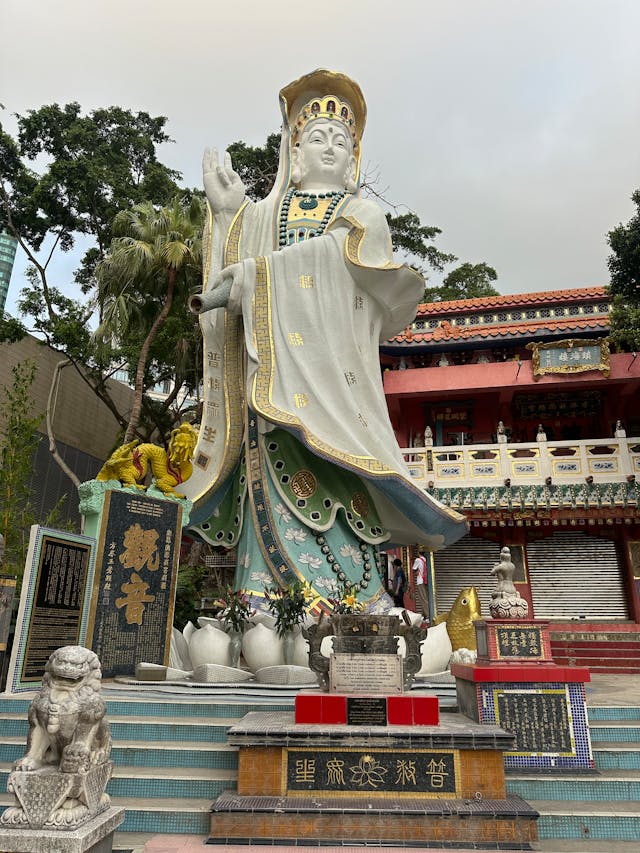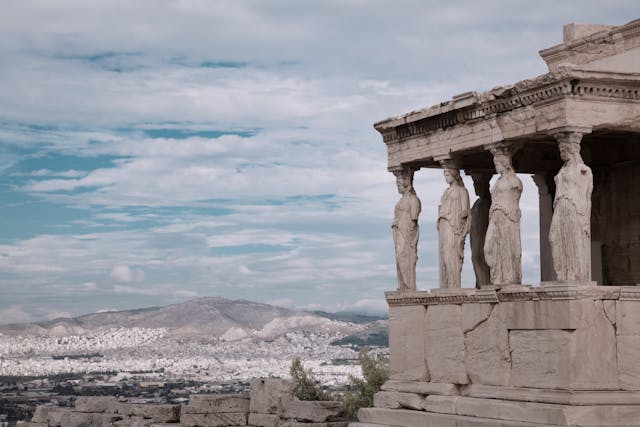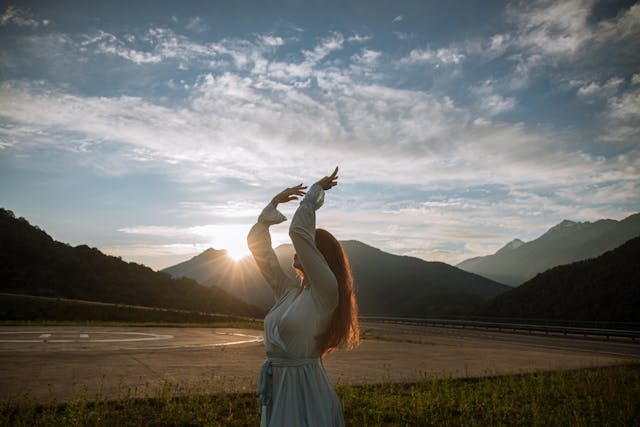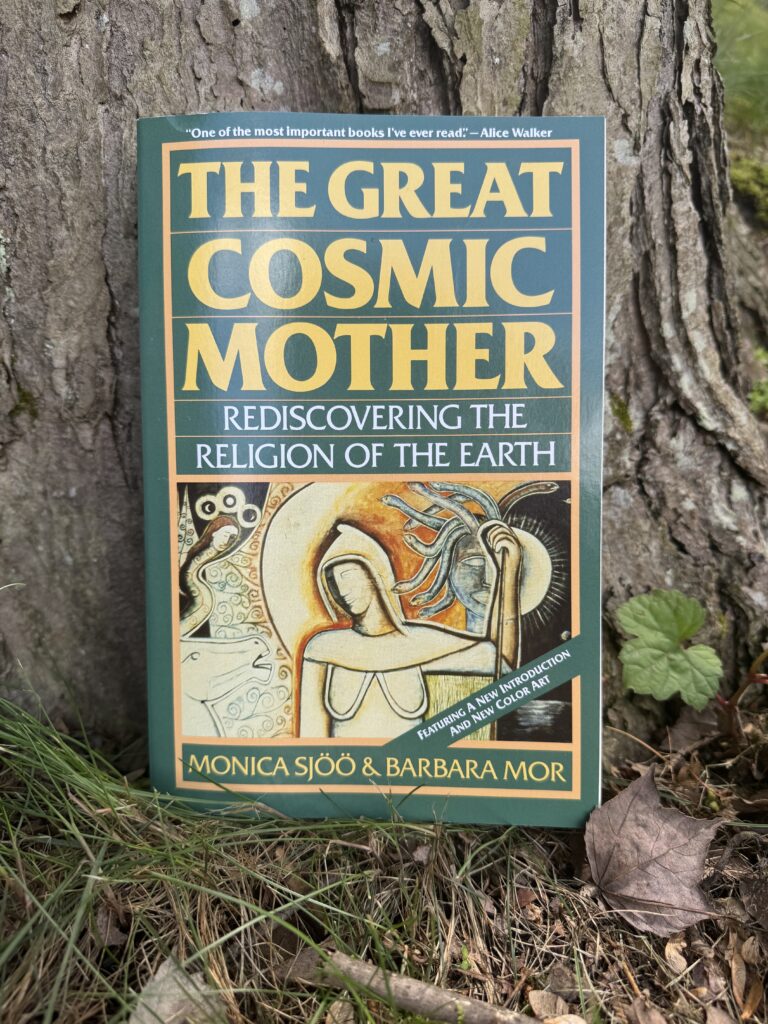Some books inform, others provoke, and then there are the rare few that transform. The Great Cosmic Mother: Rediscovering the Religion of the Earth by Monica Sjöö and Barbara Mor is one such transformative work—a revolutionary exploration into the lost matriarchal origins of human spirituality that urges us to reimagine history, religion, and our relationship with the Earth itself. For anyone passionate about holistic wellness, women’s wisdom, ancient traditions, and spiritual ecology, this book is an awakening.

Above image: Guanyin, the Bodhisattva of Compassion, is one of the most beloved figures in East Asian Buddhism. Often portrayed as a serene and nurturing feminine presence, she embodies the divine mother energy explored in The Cosmic Mother. Revered for her boundless mercy, Guanyin listens to the world’s cries, offering solace and spiritual guidance to all beings. Her presence in Buddhist practice symbolizes unconditional love, healing, and the sacred feminine.
Originally published in 1987 and continually gaining traction among feminist scholars, spiritual seekers, eco-activists, and alternative therapists, The Great Cosmic Mother is both a history book and a spiritual manifesto. Sjöö, a visionary Swedish artist, and Mor, an American poet and historian, spent decades compiling archaeological, anthropological, mythological, and artistic evidence that points to the existence of ancient matrifocal and Earth-centered societies—long before the advent of patriarchal civilization and institutionalised religion.

Above image: Beneath the fading sun, the Maidens of the Erechtheion—graceful Caryatids carved in stone—stand in silent defiance of time, guardians of feminine strength and mystery. These sacred figures embody the ancient reverence for the divine feminine, echoing themes in The Cosmic Mother, where womanhood is portrayed as the root of spiritual power and cosmic balance. Their enduring presence reminds us of a time when goddesses reigned and the feminine was sacred.
This book does not offer a soft or romanticised version of the past. Instead, it fiercely challenges dominant historical narratives that have erased or distorted the contributions and significance of women, nature-based spirituality, and goddess traditions. It’s a bold re-framing of prehistory that asserts the primacy of feminine divinity and the sanctity of the Earth, both of which have been vilified, commodified, or ignored in contemporary Western culture. Through in-depth research and poetic prose, Sjöö and Mor shine light on suppressed wisdom traditions that were once central to human life, including menstruation rituals, shamanic practices, community healing, and ecological balance.
The Hopi people of Arizona follow a matriarchal system where inheritance, clan identity, and social continuity flow through the mother’s line. Women are deeply respected as the heart of both family and spiritual life, seen as natural caretakers of the earth and sacred knowledge. This living tradition echoes the themes explored in The Cosmic Mother, which celebrates ancient societies where women held central roles in culture and cosmology. As the authors write, “In woman-centered societies, the mother was the model for all social institutions—she was the origin, the center, the source of law.” This reflection of the divine feminine still pulses through Hopi life today.
What makes this book so compelling is its intersectional lens—it weaves together feminist critique, environmental urgency, spiritual longing, and political rebellion. It reads as much like a sacred text as it does a scholarly work, reminding readers that spirituality is not separate from the body, the land, or each other. It argues that patriarchy, war, and environmental destruction are not inevitable outcomes of human progress, but rather historical deviations from older, more harmonious ways of being. In today’s world of climate crisis, gender-based inequality, and spiritual disconnection, the book’s message feels more relevant—and more urgent—than ever.

At Nomadify, where we celebrate holistic healing, eco-conscious living, and alternative spirituality, The Great Cosmic Mother aligns deeply with our mission. It invites us to remember that our spiritual ancestry is not one of separation or domination, but one of connection—connection to the planet, to the divine feminine, to cyclical time, and the sacredness of life in all its forms. For those on a journey of personal empowerment or seeking to heal collective wounds, this book offers both context and clarity. It helps make sense of why so many feel spiritually lost in modern society—and how remembering the past can help us forge a different, more sustainable future.
Yes, it’s dense. Yes, it’s unapologetically radical. But that is what makes The Great Cosmic Mother necessary. It is not a light read, but rather a lifelong companion—a text to return to as you evolve in your understanding of self, spirit, and society. Whether you are a healer, activist, seeker, or simply curious about the roots of Earth-based spirituality, this book is an essential addition to your library.

In honouring the divine feminine, Sjöö and Mor also honour the Earth, reminding us that healing ourselves is inextricable from healing the planet. In a time where both are in crisis, this book offers more than knowledge—it offers hope, power, and remembrance.
“Highly recommended for readers of all genders who wish to rediscover lost wisdom, deepen their spiritual path, and reconnect with the rhythms of the Earth,” Nomadify 2025.
Love Life x
References:
- Sjöö, M., & Mor, B. (1987). The Great Cosmic Mother: Rediscovering the Religion of the Earth. HarperOne.
– The primary text, a foundational work on goddess spirituality, feminist history, and Earth-based religion. - Eisler, R. (1987). The Chalice and the Blade: Our History, Our Future. Harper & Row.
– A complementary work that explores the shift from partnership to dominator cultures, aligning with Sjöö and Mor’s thesis. - Gimbutas, M. (1991). The Civilization of the Goddess: The World of Old Europe. HarperSanFrancisco.
– Archaeological research from a renowned scholar that supports the existence of pre-patriarchal, matrifocal societies in Neolithic Europe. - Christ, C. P. (2003). She Who Changes: Re-imagining the Divine in the World. Palgrave Macmillan.
– Offers a theological and philosophical framework for understanding the divine feminine in contemporary spirituality. - Starhawk. (1979). The Spiral Dance: A Rebirth of the Ancient Religion of the Great Goddess. HarperOne.
– An influential book in modern witchcraft and goddess worship, echoing themes from The Great Cosmic Mother. - Spretnak, C. (1997). The Resurgence of the Real: Body, Nature and Place in a Hypermodern World. Routledge.
– Explores how reconnection with body and Earth is central to healing in a post-industrial society. - Merchant, C. (1980). The Death of Nature: Women, Ecology, and the Scientific Revolution. Harper & Row.
– Investigates the historical roots of environmental degradation and how they tie into the suppression of feminine spiritual traditions.
